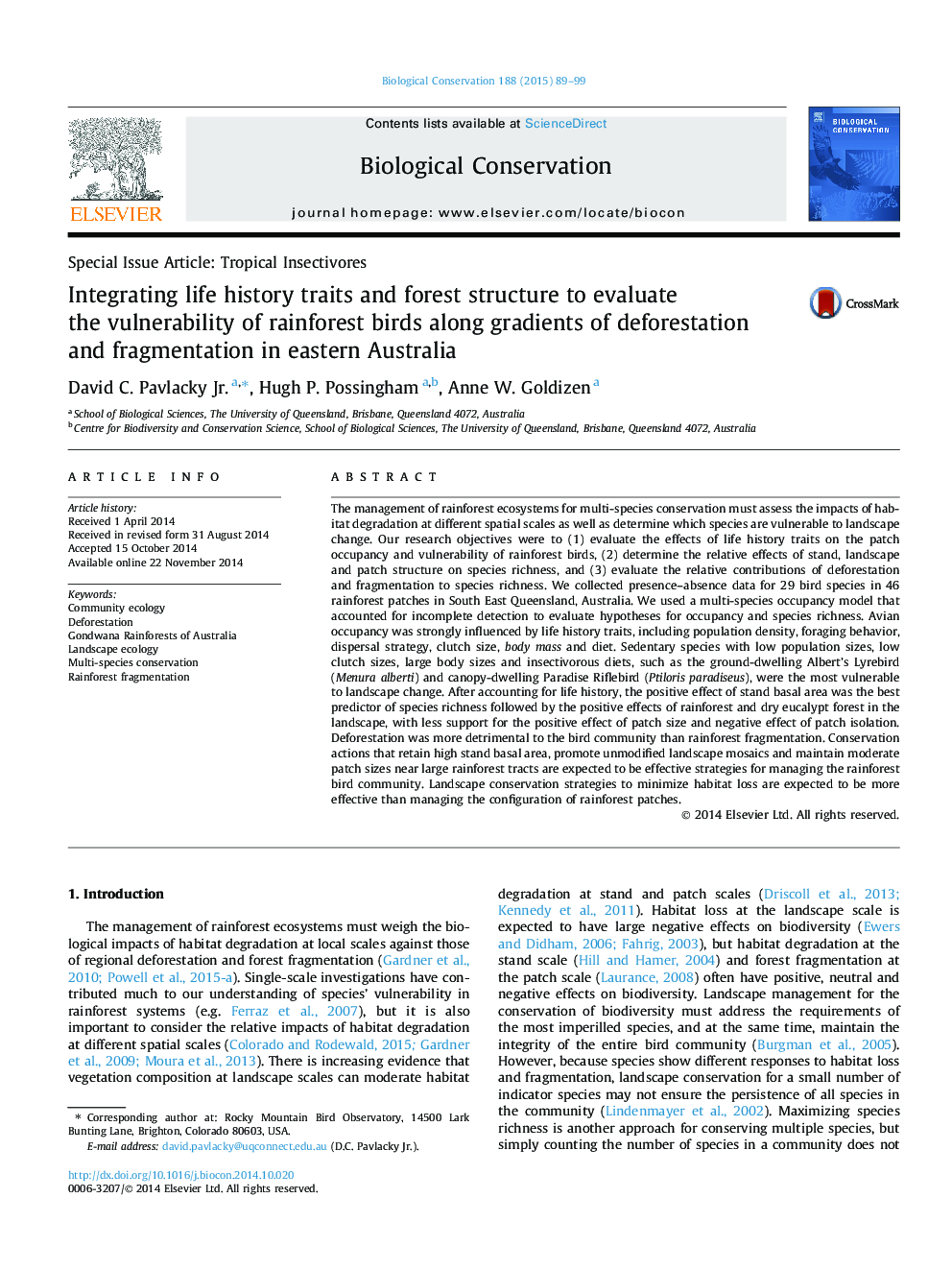| کد مقاله | کد نشریه | سال انتشار | مقاله انگلیسی | نسخه تمام متن |
|---|---|---|---|---|
| 4385044 | 1617913 | 2015 | 11 صفحه PDF | دانلود رایگان |
• Avian life history traits predicted the patch occupancy rates of the species.
• Terrestrial, understory and canopy insectivores were vulnerable to landscape change.
• Local stand condition and landscape composition predicted species richness.
• Patch area and isolation influenced species richness to a lesser extent.
• Deforestation was more detrimental to species richness than rainforest fragmentation.
The management of rainforest ecosystems for multi-species conservation must assess the impacts of habitat degradation at different spatial scales as well as determine which species are vulnerable to landscape change. Our research objectives were to (1) evaluate the effects of life history traits on the patch occupancy and vulnerability of rainforest birds, (2) determine the relative effects of stand, landscape and patch structure on species richness, and (3) evaluate the relative contributions of deforestation and fragmentation to species richness. We collected presence–absence data for 29 bird species in 46 rainforest patches in South East Queensland, Australia. We used a multi-species occupancy model that accounted for incomplete detection to evaluate hypotheses for occupancy and species richness. Avian occupancy was strongly influenced by life history traits, including population density, foraging behavior, dispersal strategy, clutch size, body mass and diet. Sedentary species with low population sizes, low clutch sizes, large body sizes and insectivorous diets, such as the ground-dwelling Albert’s Lyrebird (Menura alberti) and canopy-dwelling Paradise Riflebird (Ptiloris paradiseus), were the most vulnerable to landscape change. After accounting for life history, the positive effect of stand basal area was the best predictor of species richness followed by the positive effects of rainforest and dry eucalypt forest in the landscape, with less support for the positive effect of patch size and negative effect of patch isolation. Deforestation was more detrimental to the bird community than rainforest fragmentation. Conservation actions that retain high stand basal area, promote unmodified landscape mosaics and maintain moderate patch sizes near large rainforest tracts are expected to be effective strategies for managing the rainforest bird community. Landscape conservation strategies to minimize habitat loss are expected to be more effective than managing the configuration of rainforest patches.
Journal: Biological Conservation - Volume 188, August 2015, Pages 89–99
